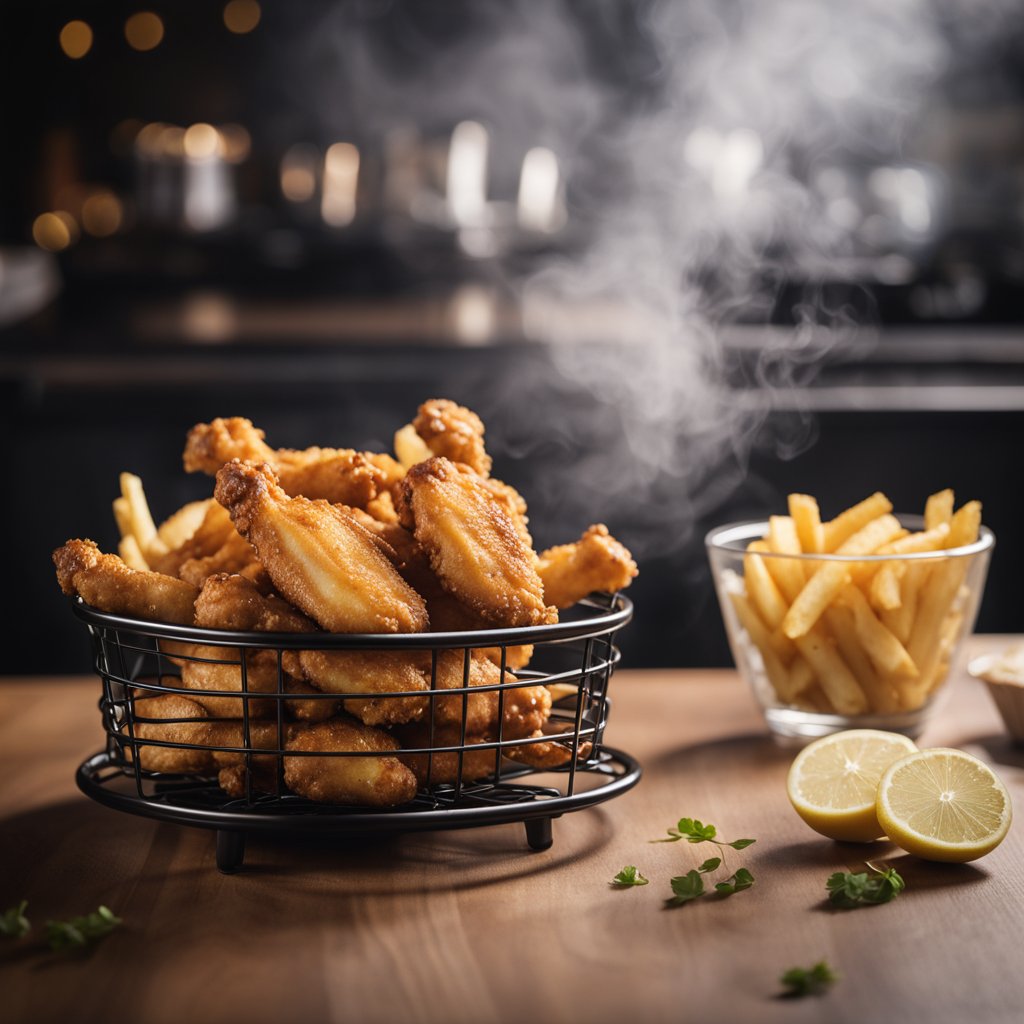The demand for non-toxic cookware has surged as health-conscious consumers become more educated about the potential dangers of traditional nonstick pans and the chemicals used in their production. Non-toxic cookware is defined as any cookware that does not release harmful substances into food during cooking. This concern grows from the awareness of chemicals such as PFAS (per- and polyfluoroalkyl substances), which are linked to health issues and persist in the environment indefinitely. Safe cookware materials include cast iron, stainless steel, ceramic, and glass, among others, which do not leach chemicals into food and are durable for everyday use.

As consumers venture into purchasing non-toxic cookware, they encounter a range of options, each with its unique features and benefits. Stainless steel is praised for its non-reactive properties and even heat distribution, while cast iron is beloved for its durability and heating capabilities. Ceramic-coated cookware offers a nonstick experience without the harmful effects of traditional nonstick coatings. Each type must be chosen with specific cooking needs and personal preferences in mind, and maintenance considerations are crucial to ensure longevity. Moreover, with an increase in eco-consciousness, the environmental impact and sustainability of the cookware production process are becoming critical deciding factors for many buyers.
Contents
- 1 Understanding Non-Toxic Cookware
- 2 Types of Non-Toxic Cookware
- 3 Top Non-Toxic Cookware Brands
- 4 Cookware Features and Considerations
- 5 Care and Maintenance of Non-Toxic Cookware
- 6 Sustainability and Environmental Impact
- 7 Safety Guidelines for Non-Toxic Cookware Use
- 8 Advanced Topics in Non-Toxic Cookware
- 9 Warranties and Guarantees
- 10 Conclusion
Key Takeaways
- Non-toxic cookware avoids hazardous chemicals and is safer for health and the environment.
- Various materials like cast iron, stainless steel, and ceramic-coated offer different advantages.
- Proper usage and maintenance are essential for the durability of non-toxic cookware.
Understanding Non-Toxic Cookware

Non-toxic cookware offers a safer option for cooking, eliminating the exposure to harmful chemicals that can be found in some traditional cookware. This section explores what non-toxic cookware is, its benefits, and the harmful substances it seeks to avoid.
What Is Non-Toxic Cookware?
Non-toxic cookware refers to cooking vessels that are designed without materials that can leach harmful chemicals into food. These products are often made from materials such as ceramic, stainless steel, or cast iron. They are developed to provide a safe cooking environment, free from PFAS, PFOA, PTFE, cadmium, and lead which are commonly referenced as forever chemicals.
Benefits of Non-Toxic Cookware
Non-toxic cookware provides several advantages:
- Healthier cooking: By reducing the risk of chemical leaching, these products minimize the potential for health concerns and hormone disruption.
- Environmental safety: Most non-toxic cookware is more environmentally friendly, as it is free from chemicals that persist in the environment.
- Durability: Many non-toxic cookware options are designed to last longer than their traditional counterparts.
Health Concerns and Chemicals to Avoid
When considering non-toxic cookware, it is essential to be aware of the harmful substances typically used in certain traditional cookware:
- PTFE, also known as Teflon, can produce toxic fumes when overheated, which may be linked to cancer.
- Per- and polyfluoroalkyl substances (PFAS) including PFOA, are associated with numerous health issues.
- Heavy metals such as lead and cadmium in cookware can lead to poisoning.
By selecting non-toxic cookware, consumers can mitigate the risks associated with these chemicals and enjoy a safer cooking experience.
Types of Non-Toxic Cookware

When selecting non-toxic cookware, it’s vital to consider the materials and coatings that ensure safety and durability. Below are the safest kinds of cookware to use for preparing meals.
Ceramic Cookware
Ceramic cookware is popular for being non-toxic and eco-friendly. 100% ceramic cookware is made from natural clay and offers a non-stick surface without the use of synthetic coatings. These pieces can withstand high temperatures and are free from PTFE and PFOA.
Stainless Steel Cookware
Stainless steel cookware is highly regarded for its durability and resistance to rust or corrosion. It does not leach chemicals into food and is ideal for high-heat cooking. The best quality comes from cookware labeled as “18/10” stainless steel, indicating 18% chromium and 10% nickel content for optimal food safety.
Cast Iron Cookware
Known for its exceptional heat retention, cast iron cookware is a reliable choice for both stovetop and oven use. It requires seasoning to maintain a natural non-stick surface and can also add a dose of iron to your diet, which is beneficial for those with iron deficiencies.
Glass Cookware
Glass is a completely non-toxic option as it does not contain any metals or harmful chemicals. Cookware made from borosilicate glass is thermal shock-resistant and suitable for baking and storing food without altering its flavor.
Enameled Cast Iron Cookware
Combining the heat retention of cast iron with a smooth, non-reactive enamel coating, enameled cast iron cookware is easy to clean and doesn’t require seasoning. Its coating prevents rust and keeps food from coming into contact with bare iron.
Carbon Steel Cookware
Similar to cast iron, carbon steel cookware heats up quickly and evenly but is lighter in weight. It’s excellent for searing and browning foods and, like cast iron, typically requires seasoning to enhance its non-stick capabilities. It provides a safe cooking surface when seasoned properly.
Top Non-Toxic Cookware Brands

When considering non-toxic cookware, the focus is on materials that do not release harmful chemicals during cooking. Brands like Caraway, GreenPan, and Lodge have been recognized for their commitment to safety and sustainability, offering a range of options from ceramic coatings to seasoned cast iron.
Caraway
Caraway Home offers a collection of ceramic-coated cookware that is free of PFAS and PFOA, catering to a health-conscious audience. Their stylish designs and sustainable packaging make them a popular choice among the eco-friendly.
GreenPan
GreenPan is well-known for its Thermolon ceramic non-stick surfaces, which are manufactured without PFAS, PFOA, lead, or cadmium. They provide a variety of collections, each with unique features tailored to diverse cooking needs.
Lodge
Lodge is renowned for its pre-seasoned cast iron skillets which offer a naturally non-toxic cooking surface that improves with use. Cast iron is a reliable choice for those looking for durability and performance.
Le Creuset
Le Creuset’s enameled cast iron cookware stands out not just for its vibrant colors but also for its resistance to chipping and superior heat retention. They produce a multifunctional range suitable for stovetop cooking and oven use.
Our Place
Our Place is celebrated for the Always Pan, which promises a non-toxic, non-stick surface. It aims to replace multiple kitchen utensils, combining eco-conscious materials with a space-saving design.
Great Jones
Great Jones presents a collection of cookware including ceramic non-stick and stainless steel options. They are applauded for aesthetic appeal alongside their non-toxic and functional cookware.
Made In
Made In provides professional-grade cookware that includes non-toxic stainless steel and carbon steel options aimed at meeting the demands of both home cooks and professional chefs.
Each brand has its own unique strengths, whether it’s Caraway’s eco-friendly practices, GreenPan’s innovative non-stick surfaces, Lodge’s classic cast iron, Le Creuset’s colorful and durable designs, Our Place’s versatility, Great Jones’s modern aesthetics, or Made In’s professional quality. Consumers have a wide range of safe options to choose from for their kitchen.
Cookware Features and Considerations
Selecting the right cookware requires understanding how various features impact cooking performance and convenience. This includes how well the cookware distributes heat, its ability to withstand oven temperatures, compatibility with dishwashers for easy cleaning, induction cooktop suitability, and the decision between purchasing sets or individual pieces.

Heat Distribution
Optimal heat distribution is crucial for even cooking. Cookware made from materials like cast iron and copper excel in this area. A saucepan or stockpot with good heat distribution ensures that foods cook uniformly, preventing hotspots that can cause burning.
Oven-Safe Qualities
Cookware that is oven-safe offers significant versatility, allowing transitions from stovetop to oven. The temperature limit can vary greatly; for example, some non-stick pans may only be safe up to 350°F, while a dutch oven might withstand over 450°F. Always check the manufacturer’s specifications.
Dishwasher Safe Options
For convenience, many prefer dishwasher safe cookware. Certain materials, like stainless steel, can typically handle the dishwasher, while others, especially non-stick coatings, may degrade over time with dishwasher use.
Induction Compatibility
Not all cookware works on induction cooktops, which require pots and pans with a magnetic base, like some stainless steel and cast iron options. If you own an induction cooktop, look for cookware labeled as induction-ready.
Cookware Sets vs. Individual Pieces
Purchasing a cookware set may offer better value and consistency in the kitchen, while selecting individual pieces allows for customization to meet specific cooking needs. Consider what pieces you use most, such as a saute pan, saucepan, or dutch oven, when making this decision.
Care and Maintenance of Non-Toxic Cookware

Proper care and maintenance are crucial to prolong the lifespan of non-toxic cookware and ensure it remains safe for food preparation. From cleaning to storage, each aspect plays a significant role in preserving the cookware’s quality and performance.
Cleaning Non-Toxic Cookware
- Immediate Cleaning: Non-toxic cookware benefits from immediate cleaning after use. They should be washed with a gentle detergent and warm water to prevent food from sticking.
- Soft Tools: Use soft sponges or cloths when cleaning to avoid scratching the nonstick ceramic coatings.
Storing Your Cookware
- Stacking Safely: If stacking non-toxic cookware, place a soft liner such as a dish towel or felt pad between each piece to protect the nonstick surfaces from scratches.
- Dry Storage: Ensure that each item is completely dry before storing to prevent the development of rust or mildew, which can compromise the cookware’s integrity.
Maintaining Nonstick Surfaces
- Avoid High Heat: Nonstick cookware should not be exposed to high heat, as it can deteriorate the nonstick coating over time.
- Cooking Utensils: To maintain the integrity of nonstick surfaces, use wooden, silicone, or plastic utensils instead of metal which can scratch the nonstick ceramic coating.
- Regular Inspection: Regularly inspect the surface for any signs of chipping or peeling. If the nonstick coating is damaged, consider replacing the cookware to avoid potential contamination of your food.
Sustainability and Environmental Impact

Sustainability in cookware speaks to the use of eco-friendly materials, the inclusion of recyclable or recycled components, and the adoption of sustainable practices during production.
Eco-Friendly Materials and Practices
Manufacturers committed to sustainability often choose materials that are not only safe for consumers but also kind to the environment. This involves selecting non-toxic, biodegradable, or rapidly renewable resources. For instance, some companies use ceramic non-toxic, nonstick surfaces which are free of harmful chemicals like PTFE and Teflon, reducing environmental harm and potential health risks.
Recyclable and Recycled Components
A key aspect of sustainability in cookware is the utilization of recyclable materials or those that have been recycled. The integration of such materials minimizes the waste stream and conserves resources. The 9 Eco-Friendly Cookware Brands For Sustainable Sautés & Conscious Cuisines article emphasizes products with components such as sturdy aluminum with partially recycled content, which also aids in even heat distribution.
Sustainability in Cookware Production
The process of producing eco-friendly cookware also matters. Brands stressing sustainability in cookware production tend to implement practices that reduce carbon footprint, water usage, and energy consumption. For example, shipping in biodegradable and recyclable materials or sourcing from responsible suppliers help reduce the environmental impact. The article about 10 Non-Toxic Cookware Brands That Cook Like a Dream points out the efforts of brands packaging their cookware in eco-conscious materials.
Safety Guidelines for Non-Toxic Cookware Use

When selecting and using non-toxic cookware, it’s important to keep in mind the appropriate safety guidelines. These measures ensure the durability of your cookware and safeguard your health.
Avoiding High Temperatures
Non-toxic cookware should not be exposed to high temperatures. Protective coatings, even if free of hazardous chemicals, can deteriorate in such circumstances. To prevent this, cook on medium or low heat and always use:
- Utensils: Silicone or wooden utensils to prevent scratching the surface.
- Cooking Sprays: Avoid cooking sprays that can build up on non-stick surfaces and cause damage over time.
Understanding FDA Regulations
The FDA oversees the safety of non-toxic cookware materials, including those with an aluminum body and non-stick surfaces. Aluminum cookware is often treated to avoid reactivity with acidic foods. As for non-stick coatings, the FDA approves PTFE-based coatings under specific usage conditions. Consumers should look for FDA-approved labels and follow manufacturer guidelines to ensure the cookware meets safety standards.
Recognizing Safe Cooking Practices
To maintain the integrity of non-toxic cookware and ensure food safety, users should:
- Hand Wash: Gently clean cookware by hand after each use to maintain the integrity of the surface.
- Avoid Overheating: Never heat an empty non-stick pan to prevent temperature spikes that can damage the coating.
- Proper Storage: Stack non-stick cookware with a layer of protection, such as a paper towel or pot protector, between each item.
Advanced Topics in Non-Toxic Cookware
In the realm of non-toxic cookware, recent advancements and future-oriented materials stand at the forefront of culinary innovation. Consumers and manufacturers alike show growing interest in the safety and sustainability of kitchenware, leading to significant developments in the industry.

Innovations in Cookware Technology
The integration of nanoparticles has transformed the landscape of non-toxic cookware. These ultrafine particles enhance cookware by providing non-stick surfaces without the health risks associated with traditional non-stick coatings. Brands like Alva Cookware utilize ceramic nonstick layers, which are often infused with nanoparticles, to offer high performance while maintaining a commitment to non-toxic materials.
Another innovative brand, Milo Cookware, showcases the use of recycled cast iron combined with eco-friendly enamel coatings. They are paving the way in merging the tried and true benefits of cast iron with modern, non-toxic enamel to create a safer cooking environment.
The Future of Non-Toxic Materials in Cookware
Looking ahead, the non-toxic cookware sector is moving towards increasingly sustainable and health-conscious options. Cast iron and stainless steel remain staples, with Milo fostering progress through their recycled iron products. Stainless steel variants, such as the Maestro Nonstick Frying Pan, exemplify this shift by combining a classic material with advanced non-stick features.
De Buyer, another prominent name in cookware, continues to shape the future with its focus on carbon steel and stainless steel items, recognized for their longevity and minimal chemical footprint. These materials promise an eco-friendly cookware evolution, reducing the generation of hazardous waste and promoting kitchen safety.
Warranties and Guarantees

When considering non-toxic cookware, the promise of a lifetime warranty can be a significant factor in the purchasing decision. Manufacturers that offer these warranties stand behind the durability and performance of their products.
Lifetime Warranty Offerings
Lifetime warranty in non-toxic cookware is an assurance from manufacturers that the product will withstand the test of time without significant degradation. For example, some companies guarantee that their cookware will not stick, chip, or flake, even after years of use. A notable example includes the Ninja™ Foodi™ NeverStick® cookware, which offers a 10-Year Guarantee, asserting confidence in their nonstick coating’s longevity.
It’s important for consumers to read the fine print of these warranties, as the term “lifetime” can refer to the life of the product rather than the human lifespan. Additionally, warranties typically cover manufacturing defects and workmanship but may not cover damage from misuse or normal wear and tear.
Manufacturers that provide these warranties often require consumers to follow specific use and care instructions; failure to adhere to these guidelines can void the warranty.
Selecting cookware from brands offering lifetime warranties can provide peace of mind, ensuring that your investment is protected against potential defects or premature deterioration.
Conclusion
Selecting non-toxic cookware is crucial for maintaining a healthy kitchen environment. Cookware brands such as Caraway and GreenPan have been recognized for their commitment to safety and sustainability. Caraway, for example, offers a cookware set that includes versatile pieces suitable for various cooking tasks. Meanwhile, GreenPan’s Valencia Pro 11-Piece Cookware Set stands out for its use of safe materials.
Cast iron options like the pre-seasoned Lodge Cast Iron Skillet continue to be favored for their durability and natural non-stick properties. They also come at an accessible price point, making them a popular choice for those seeking reliability without the worry of toxic chemicals.
For consumers prioritizing ethical considerations, brands like Milo Cookware emphasize eco-friendliness and responsible manufacturing processes, ensuring their products are both safe for users and kind to the planet.
In summary, the market offers a variety of non-toxic cookware to accommodate different preferences and price points. From ceramic and stainless steel to cast iron and carbon steel, consumers have the ability to choose cookware that aligns with their health goals and cooking needs, all while supporting sustainable and ethical manufacturing practices.


